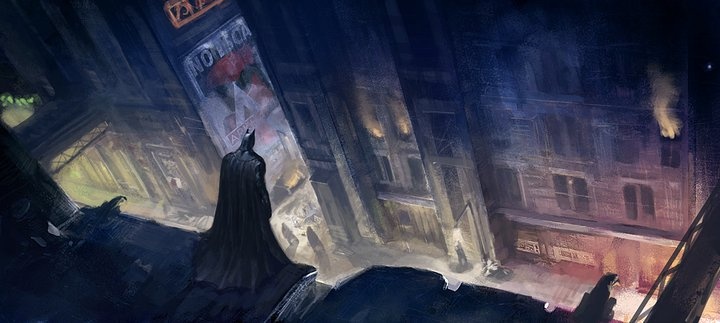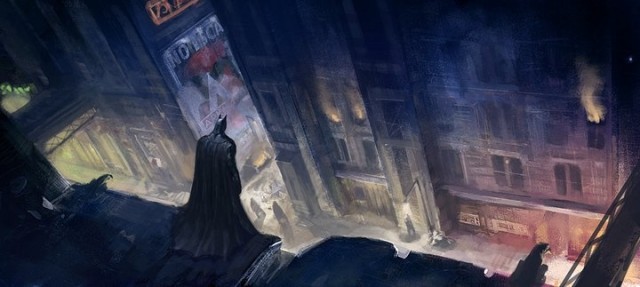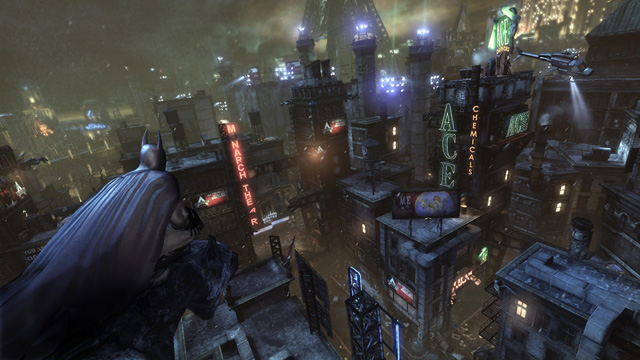Interview: Batman – Arkham City

Sam Hill
21st October 2011
Yesterday I had the fortune of meeting David Hego, Adam Vincent and Paul Crocker; Art Director, Animator and Lead Narrative Designer respectively at London-based Rocksteady Studios. They commented on being a little dazed, stepping out into the daylight after having spent the last two years working on the new Batman: Arkham City game (and two years on Arkham Asylum before that).
The title looks set to be one of the industry highlights of the year. Set in the “Arkham verse” of the DC Batman world, the story arc revolves around arch-criminal activities set within a Gotham City ghetto – a district re-appropriated as an enormous open-air prison (à la Escape From New York (1981)).
It was refreshing to hear professionals at the top of their game (Arkham Asylum holds a Guinness World Record for critical acclaim) discuss their experiential considerations during development. Crocker explained the central tenet of both games:
“It was designed specifically to make you feel like Batman. We looked at what the character was; we looked for key game mechanics we could extrapolate from who Batman is, and built a game around that – having fighting, detective and predatorial modes.
…Batman should own the night. We wanted you to feel that you could jump off any building and glide and really feel like him… and we built a city to do it. That’s the purpose of the city, it’s not the other way round.”
Hego agreed. Adding:
Every square meter of the game needed to be injected with Batman’s DNA, so that was the idea – to expand the world we had created in Arkham Asylum.
Adam Vincent commented:
“From the animation point of view – we make sure that the characters feel like themselves – Batman’s gotta feel like Batman and move like him – if we don’t think that it’s as ‘Batman’ as it can get at any one point, then we won’t do it.
How would Batman take down 3 thugs? You have to think about it… Your first design as an animator might not always work – or there might be problems with the actual mechanics of what you’re doing (the coders can say “you can’t really do that”). You’re always speaking to different departments.”
That might be the measure of the game. Though the project was run across a team of over a hundred, across many different departments with their own commitments, and with obligations to the fans, to DC, marketers, investors and Paul Dini (the games writer), they still collectively managed to maintain a single idea as a focal point and drive it through consistently, and that idea was creating an immersive and engaging feeling within the player – that they really are Batman.

